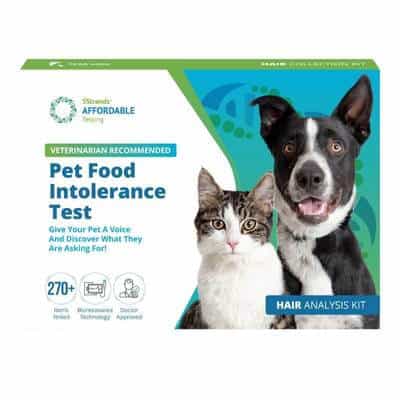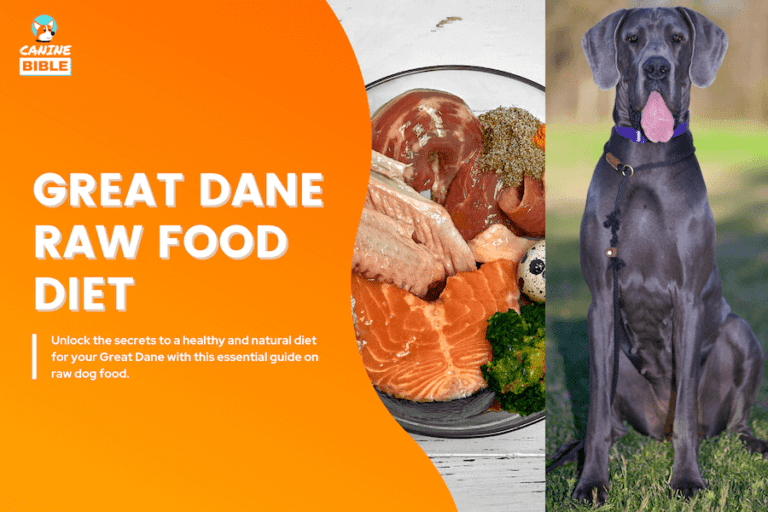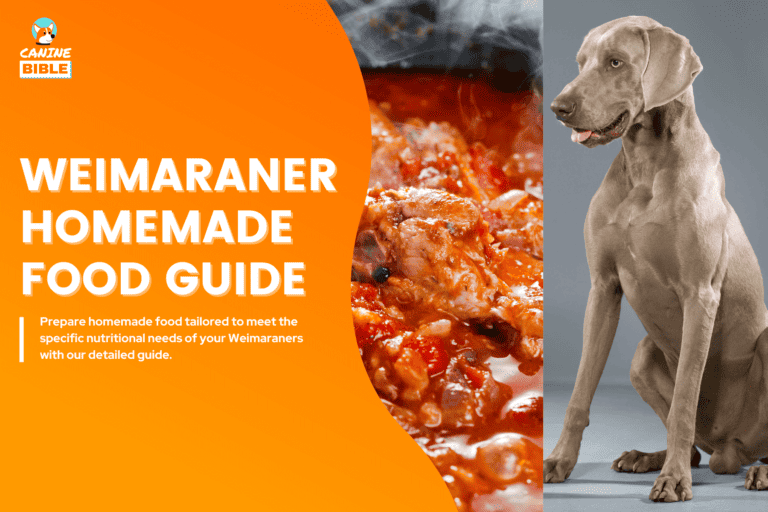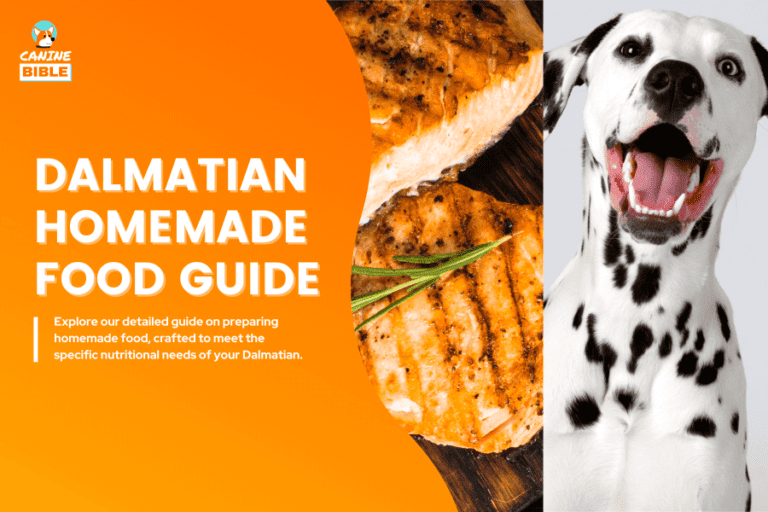The Complete Guide to Dogs Eating Peas: Bad for The Heart?
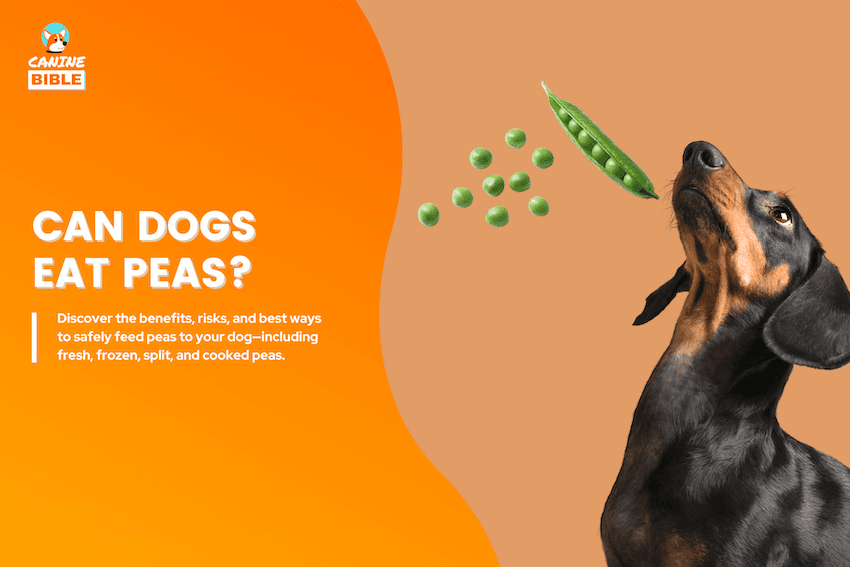
Canine Bible is reader-supported. We receive affiliate commissions via some of our links. Learn more.
Yes, dogs can eat peas in moderation, and these small green veggies can offer some nutritional benefits. However, before adding peas to your pup’s diet, there are a few important factors to consider. While fresh or frozen peas without added salt or seasoning are generally safe, some forms, such as canned peas, often contain excess sodium, which can be harmful to dogs. Plus, what about pea pods or split peas? Can certain types of peas cause digestive issues or allergies? Are peas in grain-free dog food linked to dilated cardiomyopathy (DCM)? This guide will explore the benefits, potential risks, and the safest way to incorporate peas into your dog’s diet.
Are Peas Good For Dogs?
Peas can be a healthy and nutritious dog treat when given in moderation.
Always feed peas in moderation. Avoid canned peas with added sodium or preservatives. Plain, fresh, or frozen peas are the safest options; however, pea pods should be offered only if they are soft and digestible.
Benefits
100 grams (3.5-ounce oz) of peas contain the following nutrients:
Peas Nutrition Chart (100g)
Nutrient Analysis
| Component | Description | Nutritional Value (per 100g Raw Peas) | Safe for Dogs? |
|---|---|---|---|
| Water | Hydrating and supports metabolism | 78.9g | ✅ Safe |
| Calories | Provides energy | 81 kcal | ✅ Safe |
| Carbohydrates | Main energy source | 14.5g | ✅ Safe (in moderation) |
| Natural Sugars | Includes glucose, fructose, sucrose | 5.7g | ✅ Safe |
| Dietary Fiber | Aids digestion and promotes bowel health | 5.1g | ✅ Safe |
| Protein | Rich plant protein for muscle support | 5.4g | ✅ Safe |
| Fat | Very low fat content | 0.4g | ✅ Safe |
| Vitamin A (RAE) | Supports vision and immune function | 38µg | ✅ Safe |
| Vitamin C | Boosts immunity and collagen synthesis | 40mg | ✅ Safe |
| Vitamin K | Supports blood clotting and bone health | 24.8µg | ✅ Safe |
| Folate (Vitamin B9) | Essential for DNA synthesis and repair | 65µg | ✅ Safe |
| Choline | Supports brain and liver function | 29.4mg | ✅ Safe |
| Iron | Helps form red blood cells | 1.5mg | ✅ Safe |
| Magnesium | Supports nerves and muscles | 33mg | ✅ Safe |
| Phosphorus | Important for bone and dental health | 108mg | ✅ Safe |
| Potassium | Supports muscle and heart function | 271mg | ✅ Safe |
| Calcium | Supports teeth and bones | 25mg | ✅ Safe |
| Zinc | Supports immune system and skin | 1.2mg | ✅ Safe |
| Lutein + Zeaxanthin | Antioxidants that promote eye health | 2475µg | ✅ Safe |
| Saponins | Natural anti-nutrients; may irritate digestion if overfed | Present in trace amounts | ⚠️ Limit large intake |
| Lectins | Bind to cells and may cause bloating or irritation raw | Present in raw peas | ⚠️ Light cooking recommended |
| Phytoestrogens | Plant compounds with mild hormonal effects | Low amounts | ⚠️ No concern unless overfed |
| Overconsumption | May lead to gas or loose stools | — | ⚠️ Feed in moderation |
Risks & Considerations Before Feeding Peas to Dogs
While peas can be a healthy and nutritious treat for dogs when given in moderation, there are several risks and considerations to keep in mind before feeding them to your canine companion:
Are Peas Linked to Dilated Cardiomyopathy (DCM) in Dogs?
Current research on the link between peas, legumes, and grain-free diets and dilated cardiomyopathy (DCM) in dogs reveals a complex and evolving landscape. While early studies suggested a strong association, newer research presents conflicting evidence, and the exact mechanism remains unclear.
Below is a synthesis of key findings from recent studies:
| Study Focus | Findings | Year |
|---|---|---|
| Biochemical profiling of diets | Peas linked to cardiac-metabolism disruptions | 2021 |
| 20-week pulse diet trial | No DCM in Huskies fed high-pulse diets | 2023 |
| Cardiac troponin I levels | Elevated in dogs eating pea/lentil/potato diets | 2021 |
| 4-week pea vs. lentil diet | Pea diet caused DCM-like changes; lentil diet did not | 2023 |
Sources: [1],[2],[3],[4]
Not all legumes, such as peas, and grain-free diets are linked to diet-related dilated cardiomyopathy (DCM) in dogs, and not every dog with DCM has consumed grain-free pet food. DCM is one of the most common heart diseases in dogs, so a dog diagnosed with DCM that has been eating a boutique, exotic, or grain-free (BEG) diet may not have developed the condition because of its food at all.
FDA stance: The FDA continues investigating but has not confirmed causality. Their last update (2022) states that no “meaningful new information” is available yet.
Practical guidance: While peas are strongly associated with these diet-related changes, the precise mechanisms and long-term risks require further study. Owners should be cautious with pea-heavy, grain-free diets until more is known.
Can Dogs Eat Peas Raw or Cooked?
Dogs can eat both raw and cooked peas, but cooked peas are generally easier to digest. Raw peas retain more nutrients but may cause gas in some dogs. If cooking, steam or lightly boil the peas without salt, oil, or seasonings. Avoid canned peas due to high sodium levels unless labeled as low-sodium and free from additives.
Are Dogs Allergic to Peas?
Most dogs are not allergic to peas, and it’s generally considered safe for canine consumption. However, some dogs may develop an allergic reaction, as with any food. Food allergies in dogs typically manifest as itchy skin, hives, infections, and anaphylaxis (a medical emergency) in severe cases. If you suspect your dog is having an allergic reaction to any food, including peas, it is crucial to consult a veterinarian.
Additionally, conducting an at-home dog allergy test like the 5Strands can help determine if your dog is allergic or intolerant to certain foods. For a more comprehensive approach, consider an at-home dog gut health test, like the Embark Gut Health Test, which can provide deeper insights into your dog’s digestive health and immune function. These tests can identify food sensitivities, bacterial imbalances, and other underlying issues contributing to allergies, helping you take proactive steps to prevent discomfort and support your dog’s overall well-being.
Risks
The following symptoms may indicate a bad reaction to peas.
What to Do If A Dog Reacts Badly to Peas
Dogs showing worsening symptoms, such as blood in their vomit or stool, difficulty breathing, weakness, or collapse, should be taken to the veterinarian immediately.
1. Contact a veterinarian immediately: Even if your dog seems fine, contact your veterinarian or an emergency pet poison hotline right away. This includes services such as the ASPCA Animal Poison Control Center at 1-888-426-4435 or the Pet Poison Helpline at 1-855-764-7661. If you can’t reach your vet, you can chat live with a registered online veterinary professional via our online vet chat or video chat support (24 hours a day, 7 days a week). You can also schedule an at-home veterinary appointment with The Vets, a mobile veterinary service that provides at-home vet care nationwide for just about everything.
2. Gather important information: When speaking to a vet, provide: Quantity consumed (estimate if unsure), time of ingestion, and dog’s weight and breed (to assess potential risk).
3. Follow veterinary instructions: The vet may suggest monitoring at home or emergency treatment at the clinic.
- Keep your dog calm and prevent them from eating anything else.
- Be prepared to transport your dog to the vet quickly if advised.
- Bring any remaining peas or packaging to help the vet assess the situation.
How to Safely Feed Peas to Dogs
When feeding peas to your dog, it’s important to follow a few simple guidelines to keep them safe:
Ways to Feed Peas to Dogs
As with any new food, it is recommended to start slowly and feed gradually to give the digestive system time to adjust.
Best Pea Dog Food
If you’re looking to incorporate peas into your dog’s diet and take advantage of their plant-based protein, fiber, and antioxidant benefits, consider NutriSource Grain Free Dry Dog Food, Chicken and Peas. This high-quality formula features real chicken as the first ingredient, paired with wholesome peas to support healthy digestion, muscle development, and sustained energy. NutriSource’s carefully balanced recipe is ideal for dogs with grain sensitivities, offering a clean, nutrient-dense option that supports immune health and overall well-being.
Best Dog Treat With Peas
For those who want to offer the benefits of peas in a flavorful, wholesome way, Fromm Four-Star Nutritionals Chicken with Peas & Carrots Dog Treats provide a protein-rich and veggie-packed snack. Made with real chicken, nutrient-dense peas, and vitamin-rich carrots, these crunchy treats provide a balanced blend of protein, fiber, and essential nutrients, supporting digestive health, maintaining energy levels, and promoting overall vitality.
How Much Peas Can Dogs Eat?
Treats should only constitute 10% of your dog’s diet, with the remaining 90% coming from well-balanced dog food. This guideline also applies to healthy treats like peas. Below, you’ll find general guidelines for safely portioning peas based on your dog’s weight.
| Dog Size | Serving Size (Feed Occasionally) | Breed Examples |
|---|---|---|
| Extra-small (2-15 lbs.) | 1–2 tsp peas (about 5–10 whole peas) | Shih Tzu, Yorkies, Chihuahuas, Maltese |
| Small (16-25 lbs.) | 2–3 tsp peas (about 10–20 whole peas) | Boston Terriers, Beagles, Dachshunds |
| Medium (26-60 lbs.) | 1–2 tbsp peas | Bulldogs, Basset Hounds, Border Collies |
| Large (61-90 lbs.) | 2–3 tbsp peas | Golden Retrievers, Pit Bulls, Boxers, Labrador Retrievers |
| Extra-large (91+ lbs.) | ¼ cup peas | Bullmastiffs, Great Danes, Saint Bernards, Great Pyrenees |
Can Puppies Eat Peas?
Yes, puppies can eat peas, but only in moderation and very small amounts. Since puppies have more sensitive digestive systems, it’s best to start with just a few plain peas—about a teaspoon’s worth—to see how they react. Feeding too many peas at once can lead to digestive upset, as puppies’ stomachs are still developing and may have trouble handling the fiber. Fresh or frozen peas (thawed and unseasoned) are the safest option. Avoid canned peas, as they often contain added sodium or preservatives that can be harmful to puppies. Never feed peas cooked with onions, garlic, butter, or other seasonings, as these are toxic or hard to digest. When introducing peas or any new food, avoid offering multiple new items on the same day so you can monitor for any food sensitivities or allergic reactions. If your puppy experiences digestive issues, introducing one new food at a time makes it easier to identify the cause. Try offering a teaspoon of plain, soft peas—either mashed or whole—and then wait a few days to observe how your puppy’s digestive system reacts before offering more.
Alternatives
Here’s a list of alternatives to peas that are just as safe and nutritious.
Frequently Asked Questions
The Bottom Line
Peas can be a nutritious and safe addition to your dog’s diet when fed properly. Packed with plant-based protein, fiber, and essential vitamins, they offer digestive and antioxidant benefits that support your dog’s overall health. Whether served fresh, frozen, or lightly cooked, peas make a healthy treat or meal topper—just be sure to avoid canned varieties with added sodium or preservatives. As with any new food, introduce peas gradually and in moderation, and consult your veterinarian if your dog has any existing health conditions. With the right approach, peas can be a wholesome and enjoyable part of your dog’s nutrition plan.
Whether you’re introducing peas or any new treat, unexpected reactions can happen. Having the right pet insurance ensures you can handle any vet visits with peace of mind. Check out our guide to the best pet insurance plans to keep your furry friend covered in every situation. If you’re looking for other healthy snack options, check out the best dog treats to find safe and nutritious alternatives. And if you’re seeking something more therapeutic to support anxiety, pain, inflammation, or other health concerns, explore the benefits of CBD oil for dogs and CBD dog treats for a natural way to help your pup feel their best.
Sources
- Investigation of diets associated with dilated cardiomyopathy in dogs using foodomics analysis
- The Pulse of It: Dietary Inclusion of Up to 45% Whole Pulse Ingredients with Chicken Meal and Pea Starch in a Complete and Balanced Diet Does Not Affect Cardiac Function, Fasted Sulfur Amino Acid Status, or Other Gross Measures of Health in Adult Dogs
- Effect of type of diet on blood and plasma taurine concentrations, cardiac biomarkers, and echocardiograms in 4 dog breeds
- Effects of a 28-day feeding trial of grain-containing versus pulse-based diets on cardiac function, taurine levels and digestibility in domestic dogs
Canine Bible authorship represents the unified voice of our entire editorial team and our in-house veterinarians rather than a single author. Each article, blog post, and review published under the Canine Bible name undergoes a rigorous review process, involving all team members to guarantee accuracy and up-to-date in accordance with the latest veterinarian research. This collaborative effort is an integral part of our editorial process and aligns with our four pillars of content creation. This approach ensures our content is backed by expert knowledge and factual information, offering our readers reliable, actionable, and trustworthy content.

